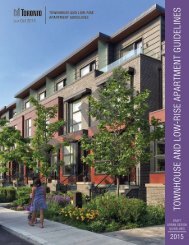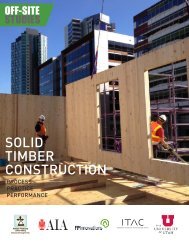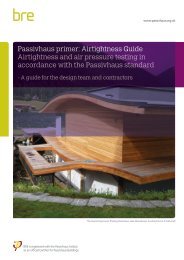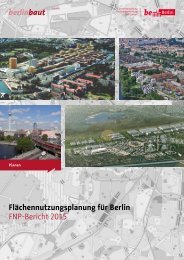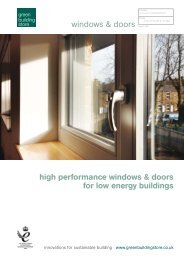TRUE URBAN SPIRIT
b008379b
b008379b
You also want an ePaper? Increase the reach of your titles
YUMPU automatically turns print PDFs into web optimized ePapers that Google loves.
Population growth, novel demands of (city) utilisation<br />
and economic change will alter Vienna’s<br />
spatial structure over the coming years: “blind<br />
spots” in the urban tissue that were formerly<br />
used as industrial zones and traffic surfaces –<br />
such as the big plots of the former railway stations<br />
Nordbahnhof and Nordwestbahnhof – are<br />
gradually transformed into fully-fledged urban<br />
quarters. Peripheral locations are brought closer<br />
to “the city” and hence become more urban due<br />
to public and private investments in housing,<br />
industry and commerce, public space and mobility<br />
infrastructure. Through targeted urbanistic interventions,<br />
the still often monofunctional housing<br />
estates of the 1950s to 1970s will assume new<br />
tasks and develop more varied and urban qualities.<br />
In the Gründerzeit quarters of Vienna, rehabilitation<br />
and discreet new construction projects<br />
lead to further possibilities of quality upgrades<br />
and the interlacing of old and new. All this is done<br />
in full respect of the valuable architectural heritage<br />
of Vienna while leaving sufficient leeway for<br />
novel developments.<br />
In a nutshell, the vision for Vienna can be defined<br />
as vibrant urbanity. In many parts of the city, this<br />
has already become reality. In the next few years,<br />
many – often quite small-scale – improvements<br />
and additions will create space for greater functional<br />
density. This not only means reduced land<br />
consumption for new buildings, but also short<br />
distances and plenty of facilities in the immediate<br />
environs, which favours eco-friendly transport<br />
modes.<br />
In this context, it is essential that space for up<br />
to 120,000 housing units must be provided until<br />
2025 to be able on the one hand to compensate<br />
for the ongoing loss of flats – caused e. g. by<br />
the combination of smaller dwellings or the<br />
demolition of badly equipped units – and on the<br />
other hand to create housing space for additional<br />
households in this growing city: the demand is<br />
generated both by changes in the lifestyles of<br />
the resident population and by the arrival of<br />
newcomers to Vienna. As in the past, part of the<br />
demand is met by existing buildings and by a<br />
wealth of small-scale new structures, additions<br />
and adaptations. However, in keeping with<br />
Vienna’s long-standing tradition, the most important<br />
pillar of new housing construction will be<br />
composed of multi-storey housing estates with<br />
a high share of subsidised units. Social housing,<br />
which in Vienna is available to many different<br />
population groups, will continue to play an important<br />
role. However, other forms of affordable<br />
housing, too, are of significance here.<br />
35



